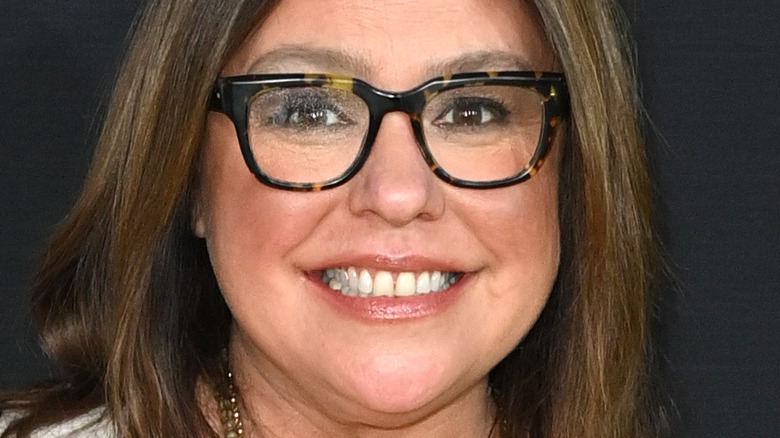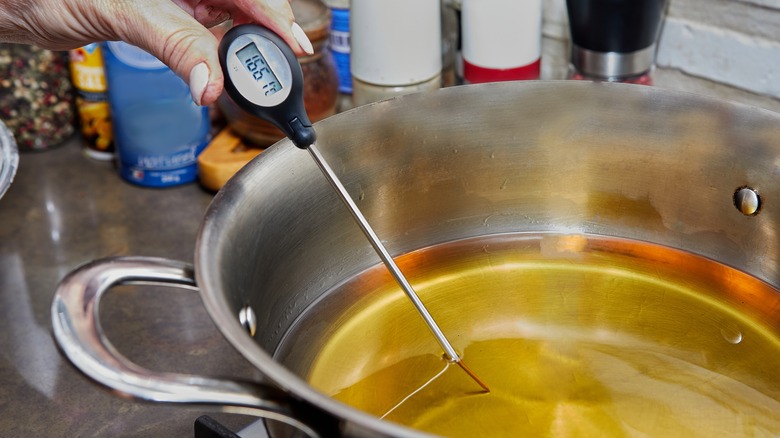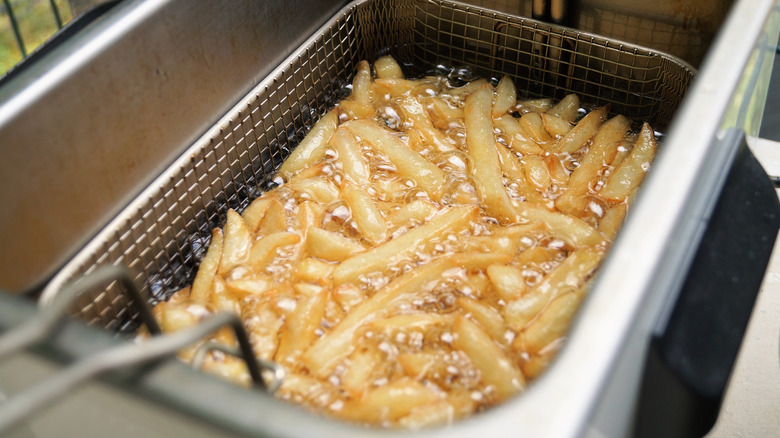The Clever Way Rachael Ray Gets Rid Of Frying Oil
There's an entire industry to help restaurants get rid of the oil they use to fry their favorite foods. According to Freight Waves, eight and a half pounds of cooking oil can be turned into a gallon of biofuel, and many restaurants are required to collect and send their used oil for this type of recycling.
But, when you fry at home, there's no easy solution. The relatively small amounts of oil used to pan-fry or shallow fry are one thing. But, what if you're using a deep fryer? Of all the mistakes you need to avoid when deep-frying, improperly disposing of the oil might be the biggest. That's a lot of oil. According to Insider, oil should only go into the trash, properly sealed in an unbreakable container. This will keep it from contaminating the environment. In some communities, it can be filtered and dropped at a recycling center.
Dealing with that hassle might be enough to not even bother. Without the restaurant industry's used oil infrastructure, most of this oil needs to be thrown out. Unfortunately, too much of this used oil gets poured into our sewer system. That's not good for anyone. According to the Falls Church Public Works Department, that oil doesn't just disappear. No matter how you send it down the drain, it'll eventually harden in a pipe. That hardened oil collects lots of stuff, too. If you want more of the grisly details, check out England's fatberg nightmares at CNN.
Do you really need to get rid of your frying oil?
Before tossing your oil, make sure you've taken full advantage of it. The best oils for deep-frying can be used more than once. As long as you treat it well. According to Dar Pro Solutions, air, light, heat, and moisture are what ruin fryer oil. Keeping oil in an opaque and air-tight container is simple enough. The correct oils won't be damaged at normal frying temperatures but, if it's smoking, the damage is being done. Moisture is pulled from foods as they cook, so moisture is inevitable. But, this can be minimized by filtering the bits of food, which still hide some moisture, out of the oil.
Lining a strainer with a coffee filter is a good way to remove the gunk from your oil. Of course, Rachael has even more uses for coffee filters, on the Rachael Ray Show. And as this America's Test Kitchen YouTube video explains, it's a slow process, but they offer a better way to "filter" your fryer oil. This technique uses a cornstarch slurry that's added to the cold oil. As this is gently heated, and stirred, the cornstarch coagulates and traps the solids in a mass at the bottom of the pan. Just pour off the clean oil and toss the cornstarch blob. They recommend using the oil three times.
Rachael Ray has a hack for you
If you're familiar with this genius way to clean used frying oil, Rachel Ray's clever hack to get rid of it will seem familiar. On the Rachael Ray Show, they extol their love of a product called Hard Oil. This allows them to safely throw the waxy mass into the trash.
According to Hard Oil, this powder is a "sustainable plant-based oil solidifier." Sprinkle the correct dose into warm oil, stir to dissolve, wait an hour, and pluck it into the trash. There are similar products available. FryAway is a similar powdered solidifier that recommends composting the hardened oil, in small amounts. These can be used on any cooking fat, including bacon fat. If you'd like, these pucks can be saved to make candles, soap, or firestarters.
If you're a deep-fryer, there's a good reason to not solidify all of the old oil. America's Test Kitchen found that for the even browning and the ultimate crisping, a small portion of used oil performs better than new oil. The partially broken down oil helps the oil overcome the moisture border between fresh oil and the food. They recommend a 5:1 ratio of new oil for the reserved oil.


